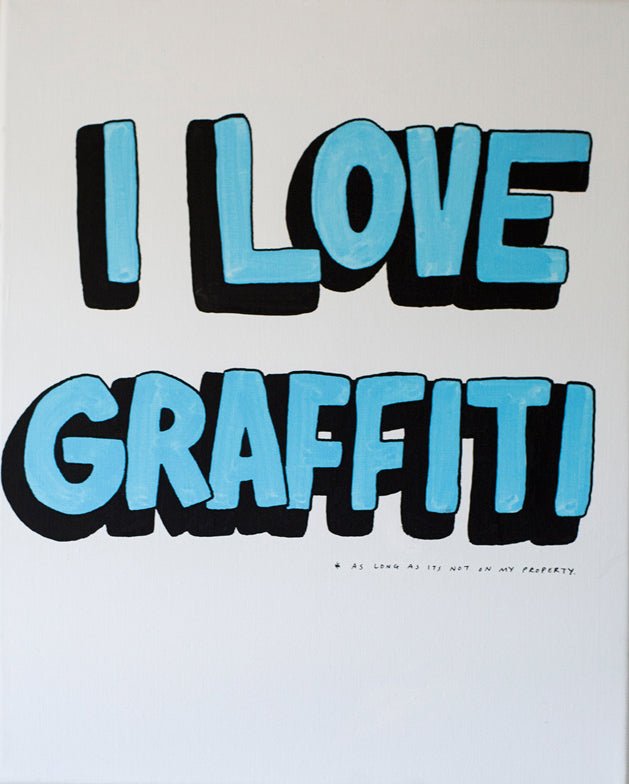
Text Type Words & Sayings

LushSux I Love Graffiti Original Acrylic Canvas Painting by LushSux
I Love Graffiti Original Painting Acrylic on Linen Canvas by LushSux Graffiti Street Artist Modern Pop Art. 2014 Signed Original Acrylic Graffiti Painting on Stretched Canvas Artwork Size 15.75x19.6 Text Type Art Reading "I Love Graffiti." The Essence of "I Love Graffiti" by LushSux "I Love Graffiti," a striking acrylic on linen canvas by LushSux, captures the heart of street pop art and graffiti artwork with a bold simplicity that speaks volumes. Created in 2014, this signed original measures 15.75x19.6 inches and presents a text type art reading the declarative sentence "I Love Graffiti." LushSux, an Australian street artist known for his controversial and often humorous work, uses this piece to make a direct statement about his passion for graffiti, a sentiment shared by many within and outside the graffiti community. The straightforward message, underscored by the artist's choice to render the text in a style reminiscent of graffiti lettering, conveys a candid appreciation for the art form while also alluding to the complex relationship society has with graffiti. Stylistic Elements and Cultural Commentary in LushSux's Work The artwork's design, characterized by thick black outlines filled with a sky blue, reflects the quintessential graffiti aesthetic—bold, readable from a distance, and unabashed in its existence. This visual approach is not just an artistic choice but also a nod to the origins of graffiti as a form of street-level communication, often used to convey messages or mark territory. LushSux's use of a stretched linen canvas as the substrate for this piece elevates the traditionally illicit act of graffiti into the realm of fine art, challenging viewers to reevaluate the distinctions between vandalism and art. The inclusion of a sardonic footnote, "as long as it's not on my property," adds a layer of self-aware commentary, acknowledging the contentious nature of graffiti as both celebrated art and criticized public nuisance. LushSux's Contribution to the Dialogue on Street Art With "I Love Graffiti," LushSux contributes to the ongoing dialogue about the place of street art in contemporary culture. By bringing a declaration of love for graffiti into the gallery space, the artist bridges the gap between the raw, often unsanctioned expressions found on city walls and the sanitized, curated experience of viewing art in conventional settings. This piece serves as a reminder of the roots of street pop art, grounded in a love for bold expression and the desire to make a mark on the world. As a modern pop artist, LushSux navigates the fine line between irreverence and homage, using his platform to both celebrate and critically examine the art form to which he has dedicated his career. "I Love Graffiti" stands as a testament to the enduring appeal of graffiti and its ability to provoke, inspire, and resonate with a wide audience.
$771.00


